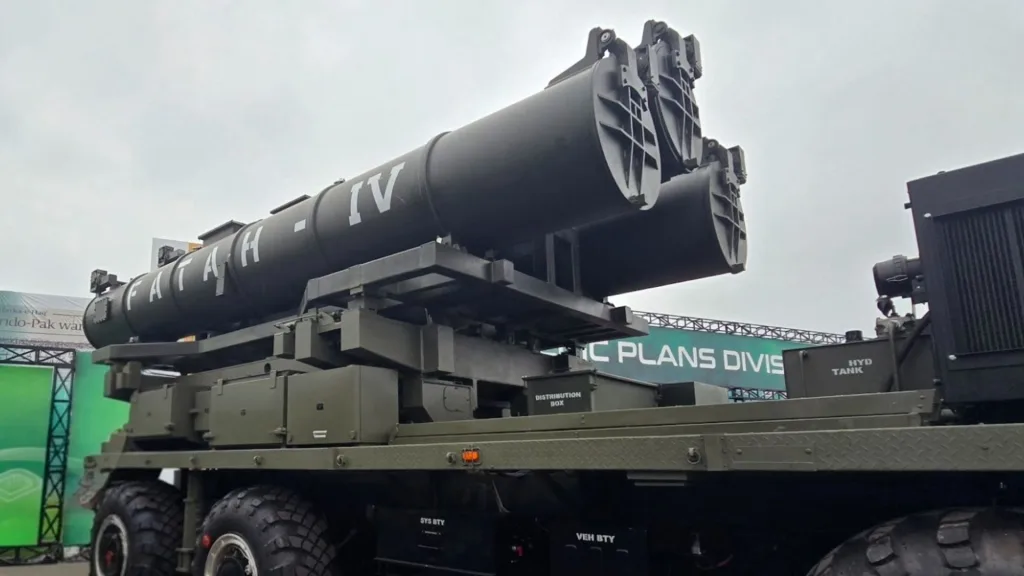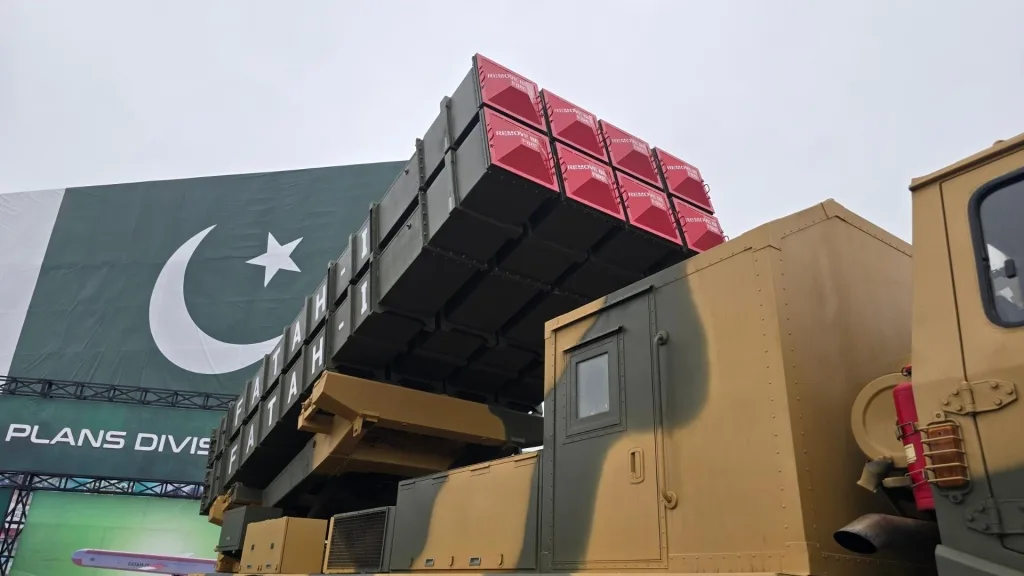8447Views

GIDS Fatah Guided Surface-to-Surface Missiles
The Fatah-series, developed by Pakistan’s National Engineering and Scientific Commission (NESCOM) and marketed by Global Industrial and Defence Solutions (GIDS), is a family of guided rocket systems designed to enhance the Pakistan Army’s (PA) stand-off range precision-strike capabilities.
These systems, ranging from the Fatah-I to the forthcoming Fatah-IV, are tailored for both tactical and strategic applications alike, enabling deep penetration strikes into enemy territory.
History of the GIDS Fatah
The introduction of the Fatah-series reflects Pakistan’s growing emphasis on indigenous defense production and self-reliance. Both systems were developed under GIDS’ leadership as part of a broader strategy to modernize rocket artillery capabilities.
The transition from unguided systems like the Yarmouk-series to guided platforms such as the Fatah-series underscores a doctrinal shift toward precision engagement and standoff capabilities.
The success of these systems has also paved the way for future variants like the Fatah-III (450 km range) and Fatah-IV (700 km range), which are currently under development.
Fatah Missile Specifications
Fatah-I GMLRS
The Fatah-I was unveiled on January 7, 2021, by Pakistan’s Inter-Services Public Relations (ISPR) as the country’s first indigenously developed Guided Multiple Launch Rocket System (GMLRS). It marked a shift from conventional unguided artillery systems to precision-guided rockets, enabling the Pakistan Army to engage targets “deep in enemy territory” with high accuracy.
Technical Specifications
- Type: Guided Multiple Launch Rocket System (GMLRS)
- Range: 70–140 km
- Accuracy: CEP ≤ 15 m
- Warhead Type: Blast fragmentation
- Rockets per Launcher: 8 rockets per MLV (Multiple Launch Vehicle)
- Operating Temperature: -20°C to +55°C
The development of the Fatah-I likely originated from a Ministry of Defence Production (MoDP) program disclosed in 2015-16 to create an “extended-range” MLRS. While earlier systems like the A-100 MLRS (a Chinese-origin system locally produced under license) had a range of 100 km, the Fatah-I extended this capability to 140 km.
The Fatah-I employs GPS/INS guidance for precision targeting and can engage up to eight different targets within an 8×8 km area at maximum range.
Fatah-II SSM
The Fatah-II was revealed in 2023 as an evolution of the Fatah-I, featuring significant enhancements in range and capability.
Officially inducted into service in early 2024, the Fatah-II introduced a twin-canister launcher system and a larger missile design capable of reaching targets up to 290 km away.
Technical Specifications
- Type: Surface-to-Surface Missile (SSM)
- Range: 100–290 km (400 km for domestic version)
- Accuracy: CEP ≤ 50 m
- Warhead Weight: 365 kg
- Warhead Type: Unitary blast or blast fragmentation
- Length: 7.5 m
- Launcher Configuration: Twin-canister oblique-launch system
Unlike the Fatah-I, the Fatah-II incorporates advanced technologies such as a supersonic glide vehicle that separates from its propulsion system in the upper atmosphere.
This feature enables mid-course maneuverability, making it more resilient against missile defense systems. The missile also supports programmable trajectories for flexible targeting options.
The development of the Fatah-II aligns with Pakistan’s broader efforts to establish a multi-layered rocket artillery inventory. While the Fatah-I serves tactical roles within shorter ranges, the Fatah-II extends operational reach for strategic strikes.
The Fatah-II uses integrated INS+GNSS navigation and offers programmable trajectory options for precision strikes. Its twin-canister launcher configuration supports salvo or non-salvo modes, enabling rapid deployment and flexible operational use.
Fatah-IV Ground-Launched Cruise Missile (GLCM) / Land-Attack Cruise Missile (LACM).
On 12 August 2025, the PA revealed the Fatah-IV as a LACM/GLCM with a range of 750 km. This appears to be a conventional variant of the Babur-series LACM/GLCM, which has, thus far, been used for strategic deterrence purposes.
Technical Specifications
- Range: 750 km
- Mass: 1,530 kg
- Length: 7.5 m
- Speed: Mach 0.7
- Accuracy: 5 m CEP
- Minimum Flight Altitude: 50 m
- Warhead Type: Blast Fragmentation
- Warhead Weight: 330 kg
For More Pakistan Army News and Analysis
October 1, 2025
September 29, 2025





